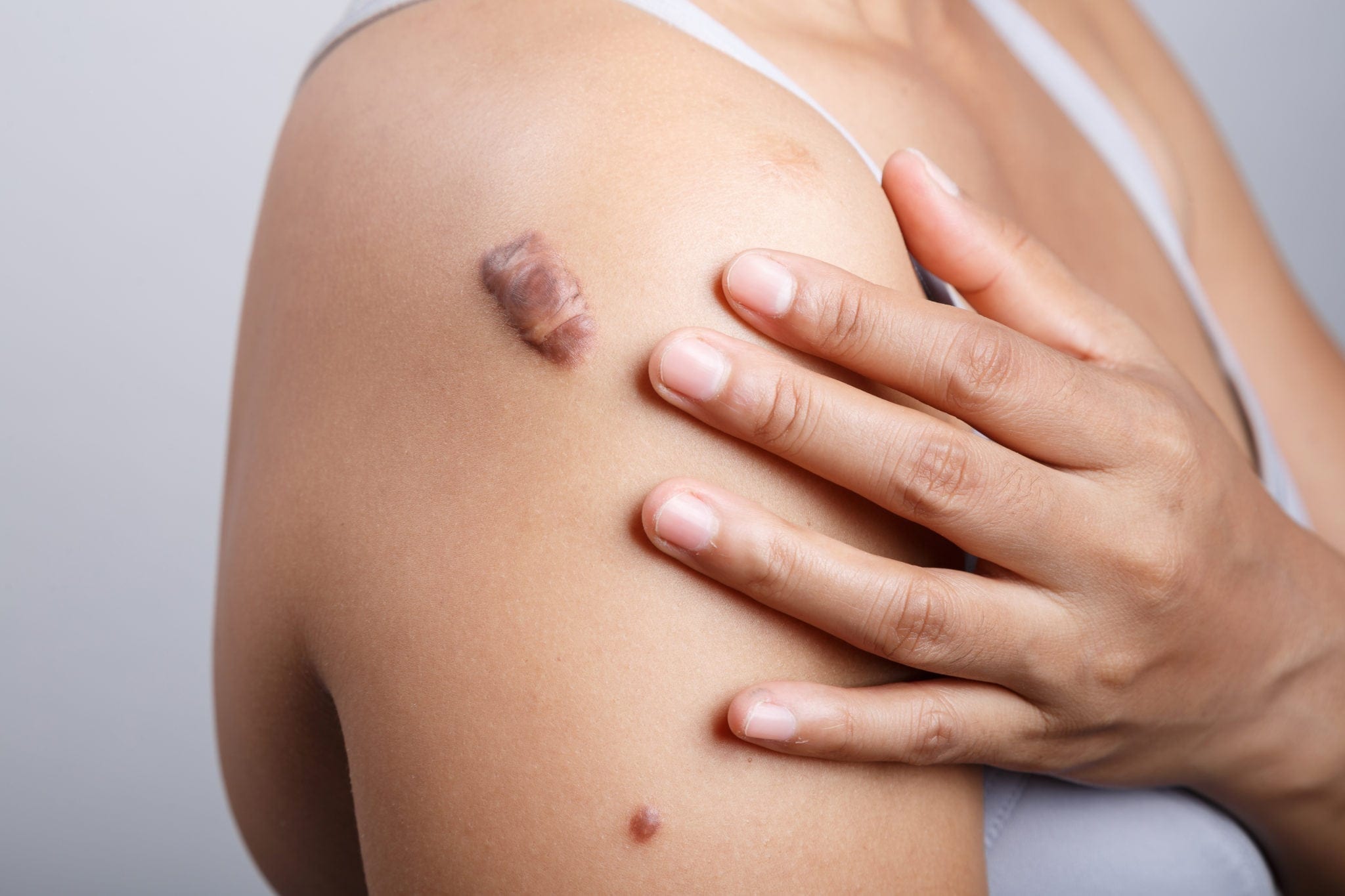Keloids

Keloids are raised, thickened scars that form at the site of an injury or incision. They are the result of an overproduction of collagen during the healing process and can be a source of discomfort and embarrassment for those who have them. In this article, we will discuss the causes of keloids, their symptoms, and treatment options.
How can one get Keloids?
Keloids can form after any injury to the skin, including surgical incisions, acne, burns, vaccinations, and even minor cuts and scrapes. However, they are more common in individuals with darker skin tones and tend to run in families, suggesting a genetic component.
What are the Symptoms of keloids?
The most common symptom of keloids is the raised, thickened scar tissue that forms at the site of the injury. Keloids can also be itchy or painful, and they may be accompanied by redness and tenderness. In severe cases, keloids can cause contractures near joints and restrict movement. However, keloids are mainly notorious to cause cosmetic disfigurement.
How can we prevent Keloid formation?
There is no guaranteed way to prevent keloids from forming, but there are steps that individuals can take to minimize their risk. These include:
- Avoiding unnecessary skin trauma, such as piercings and tattoos.
- Protecting wounds from sun exposure by regularly applying sunscreens to prevent darkening of the scar tissue
- Applying pressure to the wound with silicone sheets or compression garments to promote healing.
What is the treatment for keloids?
- Corticosteroid Injections: Corticosteroid injections are the most common treatment for keloids. They work by reducing inflammation and suppressing the immune system's response to the injury, which can help to flatten and reduce the size of the keloid.
- Surgery: Surgical removal of keloids can be effective, but there is a high risk of recurrence, and the procedure can sometimes make the keloid worse. However, it can be done safely for keloids on ear lobules.
- Laser Therapy: Laser therapy can help to reduce the size and appearance of keloids by breaking down the excess collagen that forms the scar tissue.
- Silicone Sheets: Silicone sheets can be used to flatten and soften keloids by applying pressure to the scar tissue.
Keloids are a common problem for individuals with darker skin tones and can be a source of discomfort and embarrassment. Treatment options range from corticosteroid injections to surgical removal and laser therapy. Prevention measures include protecting wounds from sun exposure and minimizing unnecessary skin trauma. If you are concerned about keloids or other scars, consult with a board certified Dermatologist or Plastic Surgeon to determine the best course of treatment for your specific needs.
